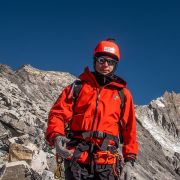Rara Lake Trek
one of the most pristine lakes in the country, surrounded by evergreen trees with a view of mountains in the backdrop
TR#210.
Rara Lake Trek Overview
Rara Lake (2980m) is one of the most beautiful lakes in Nepal and also the highest in altitude. Rara lake trekking involves traversing the remote trails of western Nepal where few trekkers venture out due to its remoteness. But it’s one of the most pristine lakes in the country, surrounded by evergreen trees with a view of mountains in the backdrop. Those looking for wilderness and solitude will find this to be the ideal journey.
Along the trail one comes across local ethnic groups living in picturesque villages who survive under harsh conditions adapting to the high altitude. The Rara Lake Trek lead through many ups and downs from hilltops to deep valleys walking through pine, spruce and juniper forests. This is an ideal trek for birdwatchers as well.
Rara Lake has one of the clearest water in the world, yet it changes colors three times a day, and the lake’s backdrop is always changing.
Apart from the region around the lake, this journey passes through exceedingly dry terrain due to its location in the rain shadow of the Dhaulagiri and Annapurna peaks. From near-by areas of the lake, views of Chucchemara Peak, Ruma Kand, and Malika Kand are visible.
Unlike the Everest Base Camp Trek and other Treks in Nepal , the Rara Lake Trek is a pleasant trek that attracts few tourists. A reasonable level of fitness is sufficient to finish the trek because the paths are at relatively low altitude.
Best Time to go on Rara Lake Trek
The best time to go on Rara Lake Trek are in the spring (September to October) and autumn (March to May). The weather will be pleasant during this time, and you will have beautiful views of the Himalayas reflected in the lake. The region is covered in colorful Rhododendrons that bloom in the spring, adding distinct and unmatched beauty to the area around the lake.
Rara Lake Trekking Route
The 9-day trek is preceded by a flight from Kathmandu to Nepalgunj followed by another short flight from Nepalgunj to Jumla. The trek begins from Jumla, through the less traveled wilderness of west Nepal and the highest point reached is 3,710m.
Rara presents a destination unlike any other with no permanent residents along the lake. The azure sky is reflected in the crystal clear waters of the lake complemented by the greenery of the forest around it.
During winter the landscape turns even more enchanting with snow on the surrounding ridges. Walking through the Rara National Park which was established in 1975, one comes across forest covered high ridges and lush alpine pastures.
Rara Lake Trek Accommodation and Permits
Trip Highlights
-
This trek can be enjoyed by all age groups and fitness levels
-
Those looking for wilderness and solitude will find this to be the ideal journey.
-
This is an ideal trek for birdwatchers as well.
-
Walking through the Rara National Park which was established in 1975, one comes across forest covered high ridges and lush alpine pastures.
-
During winter the landscape turns even more enchanting with snow on the surrounding ridges.
Daily Itinerary
Our Travel Expert

Udaya Gartaula
+9779801026642
info@rolwalingtrek.com
Cancellations & Refunds
At Rolwaling Trek, we just want our clients to have the best possible experiences. That’s why we don’t withhold deposits or have a fixed cancellation policy. We understand that sometimes life puts you in unexpected situations, so if you have to cancel or postpone a trip, there’s no need to worry.
If you need to change plans, please get in touch with us as soon as you can, and we will make the necessary arrangements to amend or cancel your trip. You can contact us at: +977 – 9801026642.
Notes
-
Trekking routes can be customised to suit your personal interests, abilities and time constraints.
-
If an area does not have good quality accommodation options, we can provide very comfortable camping-style accommodation for the duration of your journey.
-
Rolwaling also has a team of cooks who specialise in making Japanese cuisine, using authentic ingredients from Japan.
-
A lot of the fresh produce used in our dishes is sourced locally from growers in the trekking region.
Contact our Travel Expert
We pay special attention to your requirements and craft personalized getaways which showcases unique cultural, adventure and natural experiences of Nepal. We craft bespoke journeys for your expeditions & treks and also ensure you can experience the best that Nepal has to offer even for your shorter trips.